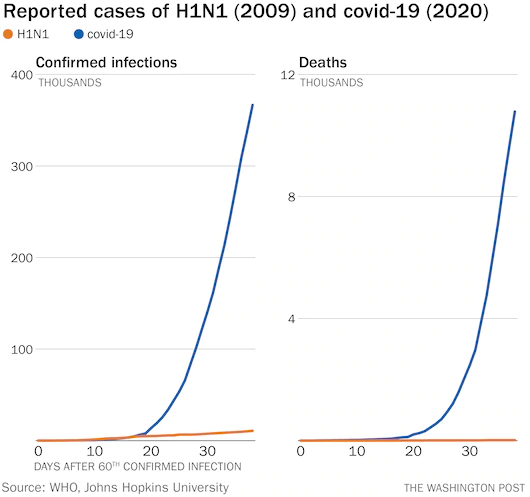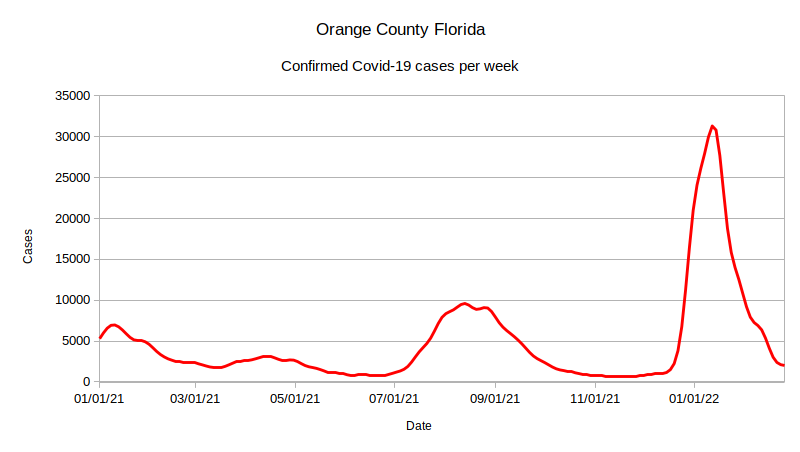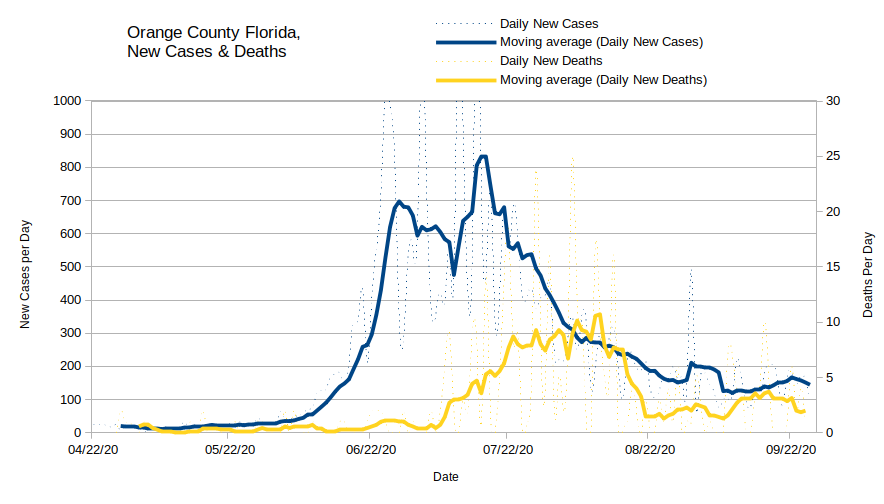National officials have stated that we may see 100,000-200,000 deaths from Covid-19. I hope the death toll will be lower, but worry it may be much higher.
From April 12, 2009 to April 10, 2010, CDC estimated there were 60.8 million cases (range: 43.3-89.3 million), 274,304 hospitalizations (range: 195,086-402,719), and 12,469 deaths (range: 8868-18,306) in the United States due to the (H1N1)pdm09 virus. – https://www.cdc.gov/flu/pandemic-resources/2009-h1n1-pandemic.html
These numbers indicate that the H1N1 (Swine flu) had a case fatality ratio (CFR) in the US of between .04 and .009 percent. Note that 1 in 3 adults over 60 had antibodies to H1N1, perhaps from an exposure in their childhood.
The World Health Organization reported that 1 in 5 people (20-27%) were infected by H1N1 in the fist year, and “Based on an estimate of around 200,000 deaths, they said the case fatality ratio was probably less than 0.02 percent.” – https://www.reuters.com/article/us-flu-h1n1-pandemic-idUSBRE90O0T720130125
In England the CFR was calculated to be 0.026 percent.
The contagiousness of H1N1 (R0) is estimated to be between 1.4 and 1.6, which means that every infected person infects 1.4 to 1.6 other people. (As long as this number is above 1.0, the growth rate is exponential.)
The Bad News
Reports from China suggest that with good medical support (i.e. hospitals not overloaded) the case fatality rate for COVID-19 is as low as 0.7 percent. [The CFR in Italy where hospitals are overloaded is currently in the 3.7 – 11 percent range.]
The contagiousness of COVID-19 is estimated to be as high as 2.7 (every infected person infects 2.7 others) with no stay-at-home orders. Seattle is one of the first cities in the US to implement physical distancing procedures and the growth rate there has slowed. One model predicts that the R0 has been reduced to 1.4 by the physical distancing implemented in Washington State, which is much better than 2.7, but still about as infectious as the H1N1 flu.
If COVID-19 infects 60.8 million people in the US, and has a CFR of 0.7 percent, that is 425,600 deaths. [Of course, if it infects 60 million people the case fatality rate may jump as all of our hospitals will be overwhelmed, because about 10-15% of infections normally result in hospitalization.] So an R0 of 1.4 is not good enough.
As a point of comparison, the CDC estimates that smoking results in more than 480,000 deaths in the USA every year. (1 in 5 deaths annually.)
The only way to prevent this is to reduce the contagiousness with extreme physical distancing. In China they were able to bring the R0 number below 1, allowing the growth rate to fizzle out with severe quarantine methods. South Korea was able to achieve a similar result with ample testing and contact tracing / containment.
Related news stories & Updates
- Dr. Birx predicts up to 200,000 coronavirus deaths ‘if we do things almost perfectly’ – March 31st 2020
- Modeling Covid-19 is hard, here is why. You may notice that my numbers above are from the simplest possible model.
- This Newsweek story suggests that the CFR is actually closer to 0.2 percent (vs H1N1’s 0.04 percent), which would give only 121,600 deaths in the above calculations.
- This Washington Post story indicates that the US has had 50,000 fatalities due to Covid-19 [April 24th, 2020].



